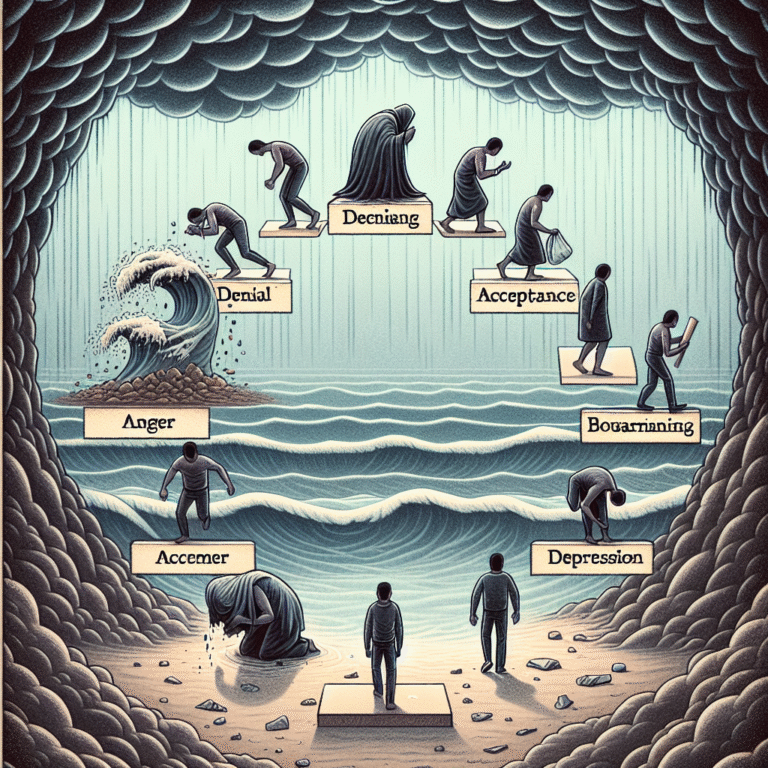
Managing Bipolar Disorder: Essential Symptoms to Watch for and How to Cope
Introduction
Bipolar disorder often feels like a rollercoaster ride—the highs seem exhilarating, while the lows can be dark and overwhelming. But understanding how to manage this complex condition can significantly enhance the quality of life for individuals affected by it and their loved ones. In this article titled "Managing Bipolar Disorder: Essential Symptoms to Watch for and How to Cope," we will delve into the fundamental symptoms to monitor, effective coping strategies, and inspiring real-life stories that highlight the resilience of those living with bipolar disorder.
Being informed and vigilant can empower patients and their support systems to navigate the ups and downs of bipolar disorder effectively. With the right knowledge and tools, you can better manage this condition, ultimately leading to a life filled with purpose and connection.
Understanding Bipolar Disorder
What is Bipolar Disorder?
Bipolar disorder, formerly known as manic-depressive illness, is a mental health condition characterized by extreme mood swings. These mood changes range from manic highs to depressive lows, impacting energy, activity levels, sleep, and behavior. Understanding the types of bipolar disorder is crucial for effective management.
Bipolar I Disorder: Defined by manic episodes lasting at least seven days or by manic symptoms so severe that immediate hospital care is needed. Depressive episodes are also common.
Bipolar II Disorder: A milder form, characterized by one or more major depressive episodes and at least one hypomanic episode.
Cyclothymic Disorder: Numerous periods of hypomanic symptoms and periods of depressive symptoms lasting for at least two years (one year in children and adolescents), but the symptoms do not meet the criteria for a hypomanic episode or major depressive episode.
- Other Specified and Unspecified Bipolar and Related Disorders: Symptoms that do not match the three categories above.
The Importance of Awareness
Understanding the symptoms and triggers of bipolar disorder is paramount. It enables those affected to identify when they are entering a manic or depressive phase, which is essential for managing bipolar disorder effectively.
Essential Symptoms to Watch For
1. Manic Symptoms
- Euphoria: An exaggerated sense of happiness or well-being, often inappropriate to the situation.
- Agitation: Increased energy levels that can lead to impulsive or reckless behavior.
- Reduced Need for Sleep: Feeling rested after only a few hours of sleep.
- Distractibility: An inability to focus, leading to jumping from one idea to the next.
- Grandiose Thoughts: Inflated self-esteem and unrealistic beliefs in one’s abilities.
2. Depressive Symptoms
- Persistent Sadness: A deep, unshakeable sadness lasting for extended periods.
- Loss of Interest: A significant drop in interest in activities that were previously enjoyable.
- Fatigue: Extreme tiredness not resolved by sleep.
- Feelings of Worthlessness: Constantly feeling like a failure or blaming oneself for past failures.
- Suicidal Thoughts: Frequent thoughts of death or suicide, highlighting the severity of the depressive phase.
3. Mixed Episodes
Mixed episodes can present both mania and depression simultaneously, leading to increased emotional instability. Individuals experiencing mixed symptoms require immediate attention and support.
Coping Strategies for Managing Bipolar Disorder
Understanding the symptoms is just half the battle. Here’s how to cope effectively.
1. Professional Support
Therapeutic Options
- Medication Management: Mood stabilizers, antipsychotic medications, and antidepressants can be pivotal in managing bipolar disorder.
- Cognitive Behavioral Therapy (CBT): A structured therapeutic approach that helps individuals identify and change destructive thought patterns.
Case Study: Sarah, a 29-year-old graphic designer, struggled for years without treatment. After receiving a diagnosis and starting a combination of mood stabilizers and CBT, she reported feeling more in control and capable of managing her emotions. Her experience underlines the importance of seeking professional help for effective management.
2. Self-Care Practices
- Establishing a Routine: Regular sleep schedules, meal plans, and exercise regimens can help stabilize mood fluctuations.
- Mindfulness and Meditation: Integrating mindfulness practices can help center thoughts and alleviate stress.
3. Building a Support Network
Having a strong support system is crucial. Reach out to trusted friends and family who understand your journey. Consider joining a support group, either in person or online, to share experiences and coping strategies.
4. Recognizing Triggers
Identifying personal triggers can be immensely helpful. Common triggers include:
- Emotional stress
- Substance abuse
- Lack of sleep
- Significant lifestyle changes
Table 1: Common Triggers for Bipolar Episodes
| Trigger | Description |
|---|---|
| Emotional Stress | Situations causing emotional upheaval |
| Substance Abuse | Alcohol or drugs can exacerbate symptoms |
| Lack of Sleep | Irregular sleep patterns often lead to mood swings |
| Seasonal Changes | Changes in season can impact mood |
5. Explore Lifestyle Modifications
Adopting healthier lifestyle choices can make a significant difference. This includes a balanced diet, regular physical activity, and mindfulness activities such as yoga and meditation.
Real-Life Applications
Case Study: James’ Journey
James, in his mid-30s, navigated the complexities of bipolar disorder through proactive lifestyle changes. Despite a turbulent childhood and struggles with alcohol, James focused on restructuring his life by:
- Committing to regular therapy sessions
- Establishing a robust morning routine that included exercise and journaling
- Limiting alcohol intake to mitigate mood swings
James’ story showcases the power of resilience and commitment to change when managing bipolar disorder.
Conclusion
In the journey of managing bipolar disorder, awareness and education are your greatest allies. Understanding essential symptoms to watch for—alongside effective coping strategies—can lead to a more fulfilling life. By proactively managing your condition, reaching out for support, and prioritizing your well-being, you can embrace the highs and lows that come with bipolar disorder.
Start today: track your moods, and seek professional help if you notice patterns that may indicate a shift in your mental state. Remember, managing bipolar disorder is not about eliminating symptoms but learning to navigate them skillfully.
FAQs
1. What is the best way to manage bipolar disorder?
The best way involves a combination of medication, therapy, lifestyle changes, and a support network to create a comprehensive management plan.
2. Can lifestyle choices affect bipolar disorder?
Yes! Healthy lifestyle choices, including regular exercise, balanced nutrition, and sufficient sleep, can significantly impact mood stability.
3. How can family members support someone with bipolar disorder?
Family members can support by being understanding, encouraging treatment, ensuring open communication, and educating themselves about the disorder.
4. Is bipolar disorder curable?
Currently, there is no cure for bipolar disorder, but it can be effectively managed with proper treatment and self-care strategies.
5. What should I do if I think I’m having a manic episode?
If you suspect you’re experiencing a manic episode, contact your healthcare provider immediately. They can assist in adjusting your treatment plan or provide necessary interventions.
Through understanding, proactive management, and robust support, living well with bipolar disorder is not only possible but can also lead to a vibrant and fulfilling life.











